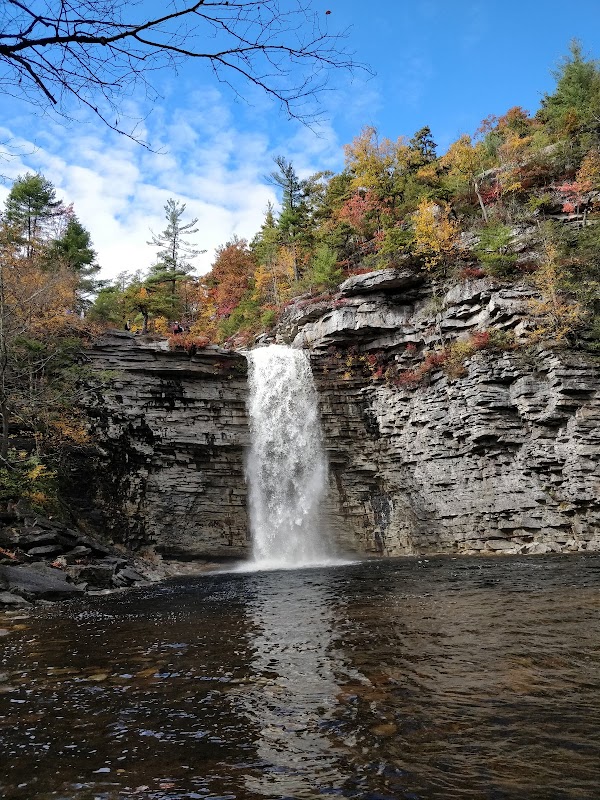
Exploring Aspetuck Land Trust: Trails and Conservation in Westport, Connecticut
Aspetuck Land Trust in Westport, CT, offers a rewarding mix of forest trails and conservation events. Discover practical hiking routes alongside immersive stewardship opportunities that deepen your connection to this dynamic landscape.
Stay Hydrated
Pack at least two liters of water, especially during summer or warm spring days; the trails carry you through a dense forest where sunlight is limited, but exertion remains steady.
Choose Durable Footwear
Opt for hiking boots with good tread to handle rocky sections and occasional mud pockets without sacrificing ankle support.
Arrive Early
Starting your hike in the morning helps you avoid afternoon thunderstorms common in warmer months and ensures you have ample daylight for your return.
Bring Bug Protection
In late spring and summer, mosquitoes and ticks are active along the river corridors; insect repellent and light long sleeves can keep irritation at bay.
Exploring Aspetuck Land Trust: Trails and Conservation in Westport, Connecticut
Aspetuck Land Trust offers a quiet but compelling wilderness experience just outside the urban comforts of Westport, Connecticut. Here, the trails invite hikers of all levels to engage with land fiercely held by nature and maintained carefully by conservation efforts. The main loop trail stretches approximately 3.5 miles with an elevation gain of about 400 feet, carving through mixed hardwood forests and beside the rugged Aspetuck River, which challenges you with its persistent murmur and shifting currents.
The terrain is a balanced mix of well-packed dirt paths and occasional rocky patches, demanding solid footwear but welcoming all who are prepared. On crisp mornings, sunlight filters through towering oaks and maples, casting dynamic shadows that seem to pulse as you walk. Listen closely—birdsong darts in the air, and the river dares you to respect its course. Sections of the trail offer sweeping views across open meadows where native grasses sway with purpose in the breeze, perfect for a brief pause.
Aspetuck Land Trust doesn’t just offer trails but runs a practical calendar of conservation events designed to immerse you further in stewardship. These range from guided invasive species removal outings to native plant identification walks and seasonal trail maintenance sessions. Participating can provide not only a deeper connection with the land but also real skills in ecological care and local natural history.
Timing your visit is crucial. Early spring brings fresh blossoms and the sounds of frogs returning, while fall paints the woods in fiery hues that contrast sharply with the steady blues of the Aspetuck River. Summer days can be lush but demand hydration and insect protection; winter reveals stark trails that test endurance but reward with quiet solitude.
Preparation tips for your adventure: wear layered clothing to adapt to shifting temperatures and choose sturdy boots capable of handling damp soil and steep inclines. Carry at least two liters of water and pack a compact first aid kit. Begin hikes early in the day to anticipate changing weather and allow time to enjoy the land without rush.
Whether you come seeking exercise, photographic opportunities, or a chance to roll up your sleeves for conservation work, Aspetuck Land Trust offers a balanced, engaging outdoor experience. This is land that moves and breathes alongside you, never quite still, asking only that you be present and prepared.
Nearby Trips
All Adventures
Boat Charters
Water Activities
Adventures near Westport, Connecticut
Discover the unique and memorable adventures that make Westport, Connecticut special.
Frequently Asked Questions
Are dogs allowed on Aspetuck Land Trust trails?
Yes, dogs are welcome but must be kept on a leash at all times to protect local wildlife and ensure visitor safety.
What is the best way to participate in Aspetuck’s conservation events?
Check the Land Trust’s website or social media for scheduled events, and register in advance. Many activities are volunteer-based and provide equipment and instruction.
Are there restroom facilities available at the trailheads?
Currently, there are no permanent restroom facilities on the trails; plan accordingly before your hike.
Is the trail suitable for children and beginners?
The main loop is moderate but manageable for active children who can handle varied terrain; beginners should expect some uphill stretches but will find rewarding views.
What wildlife might I encounter on the hike?
Deer, eastern gray squirrels, a variety of songbirds, and occasional sightings of red foxes are common; near the river, you might spot mink or great blue herons.
Are there any off-trail areas or viewpoints worth exploring?
There are a few lesser-known clearings along the river that provide quiet spots for reflection and birdwatching, but off-trail hiking should be undertaken with caution and respect for the land.
Recommended Gear
Sturdy Hiking Boots
Provide support and traction needed for the mixed terrain, including rocky and muddy patches.
Water Bottle or Hydration Pack
Necessary for maintaining hydration on longer hikes, particularly in warmer months.
Layered Clothing
Allows quick adjustments to changing temperatures, especially during spring and fall.
Insect Repellent
Helps reduce bites from mosquitoes and ticks prevalent near river areas in warmer months.
Local Insights
Hidden Gems
- "A quiet riverbank clearing near the northern end of the loop, perfect for spotting river otters at dawn."
- "A small grove of mature hemlocks offering cool shade rarely crowded by visitors."
Wildlife
- "Eastern box turtles during spring and summer."
- "Barred owls that call at dusk within the forest canopy."
History
"The Aspetuck Land Trust preserves land that was once active farmland and river mills dating back to the 18th century, a quiet reminder of the area's colonial roots alongside ongoing natural preservation."
